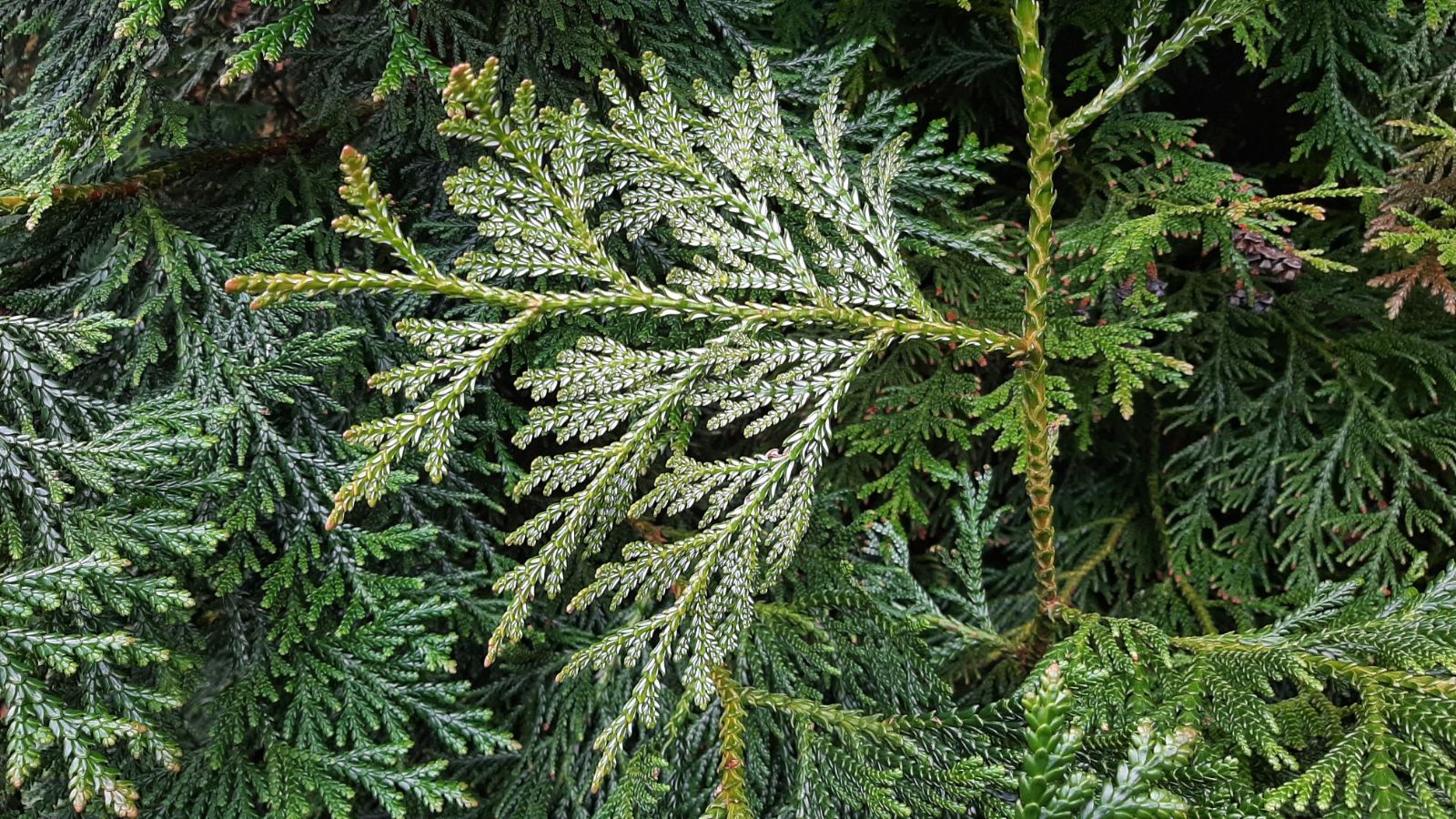Thujopsis
Credits
Tom Christian (2021)
Recommended citation
Christian, T. (2021), 'Thujopsis' from the website Trees and Shrubs Online (treesandshrubsonline.
Family
- Cupressaceae
Synonyms
- Dolophyllum Salisb. nom. rej.
A monospecific genus of conifer closely allied to Thuja, differing mainly in the broader and flattened branchlets, the broader and stiffer leaves, and in the rounded seed cones with woody scales with 3–5 seeds per scale (cf. 2–3 in Thuja) (Bean 1981). For a full description see Thujopsis dolabrata.
A coniferous genus comprising a single species and one variety, the name Thujopsis was published in 1842. Since 1844 this name has been universally applied to the distinctive Japanese Hiba, T. dolabrata (Farjon 2005). In the early 1990s however, it was discovered that this plant had first been described in 1817, as Dolophyllum Salisb., and according to the rules of botanical nomenclature the older name has priority. However, after nearly 150 years of exclusive use Thujopsis was firmly established, hence it was conserved in favour over Dolophyllum following the proposal of Farjon & Hunt in 1994 (Farjon 2005).
Hiba’s distinctiveness means it is unlikely to be confused with any other conifer, and even among its numerous ‘flat-leaved’ Cupressaceae relatives it is amply distinct. Its leaves are larger and thicker than in any Thuja, which it most closely resembles, and no Thuja nor Chamaecyparis can boast such a beautiful and intricate pattern of stomata on the leaf undersides. Certain fringes of our area are mild enough to support Calocedrus macrolepis and Fokienia hodgsinii whose leaves can be equally large, but not as thick. No Calocedrus has leaves so beautifully marked beneath as Hiba, and in this regard only Fokienia comes close, but its leaves are thin and flexible, not thick and stiff, and confusion is unlikely. Austrocedrus chilensis from Chile and Argentina has similarly shaped leaves, often with beautiful stomatal markings, but again these are finer and thinner than Hiba, and similarly coloured on both surfaces.
A single variety, Thujopsis dolabrata var. hondae is recognised, which may be distinguished by its seed cones without prominent mucros (horns) and a generally more arborescent habit; it is distributed in northern Japan and is discussed under the entry for T. dolabrata sensu lato.

